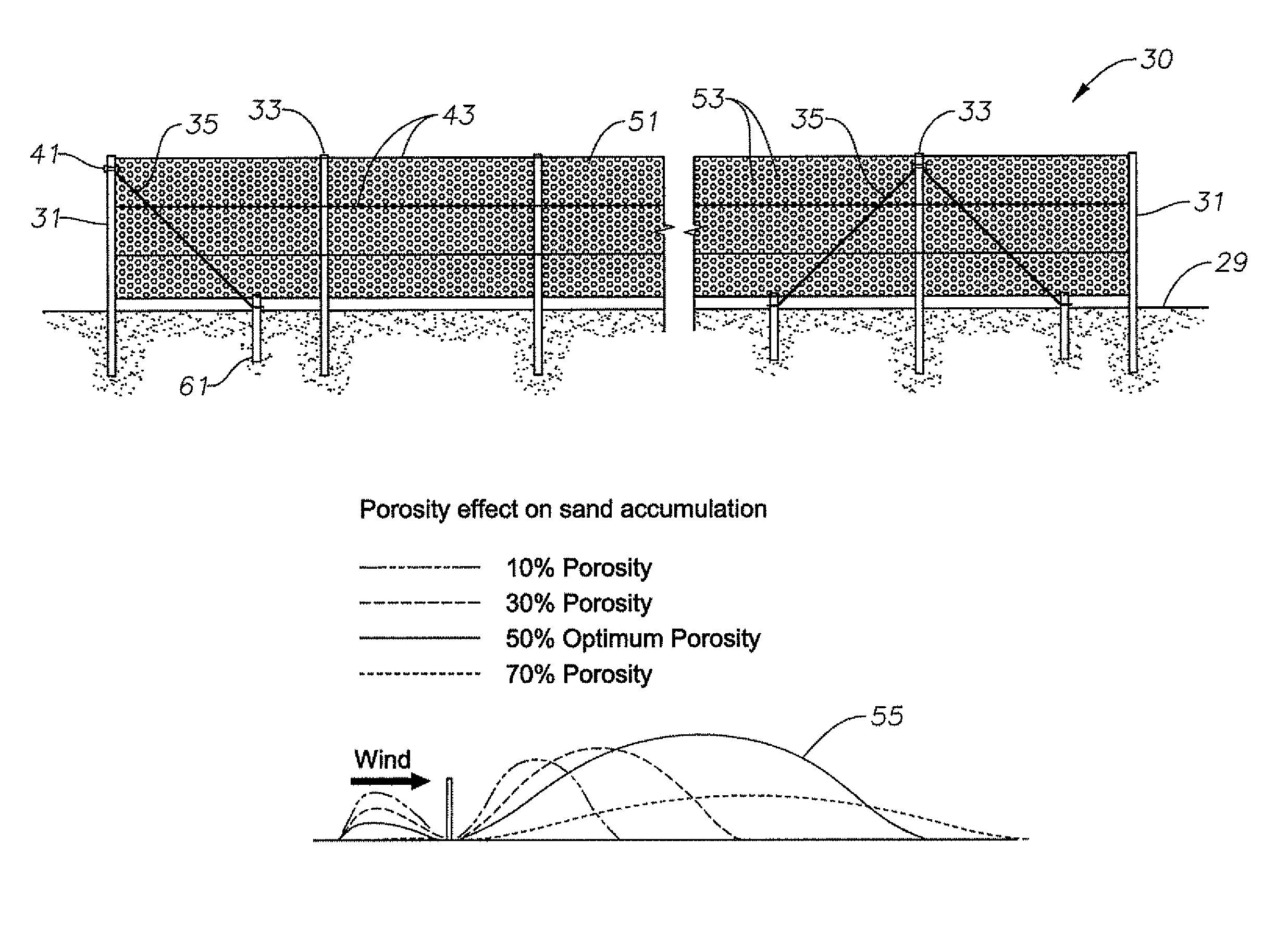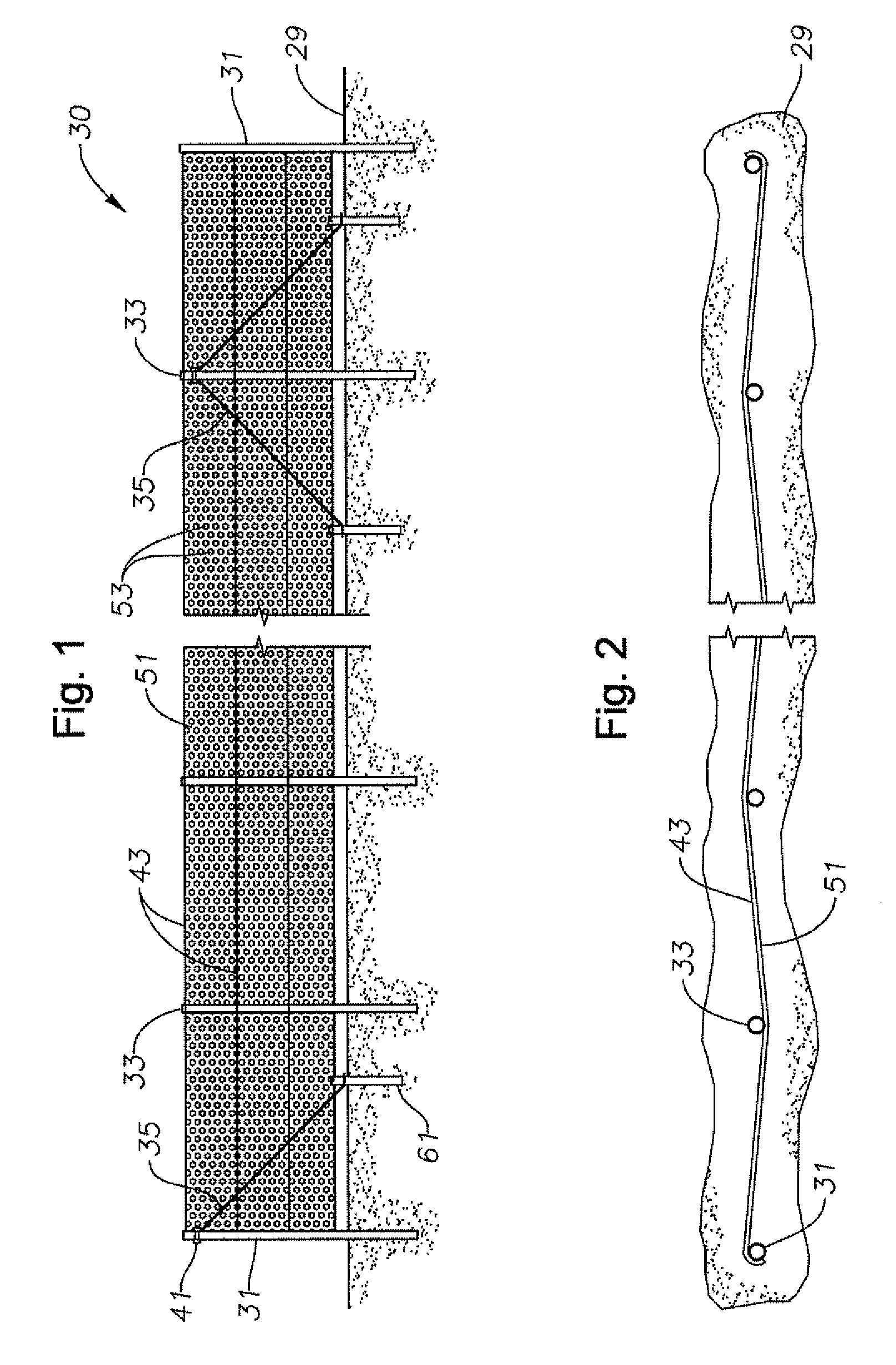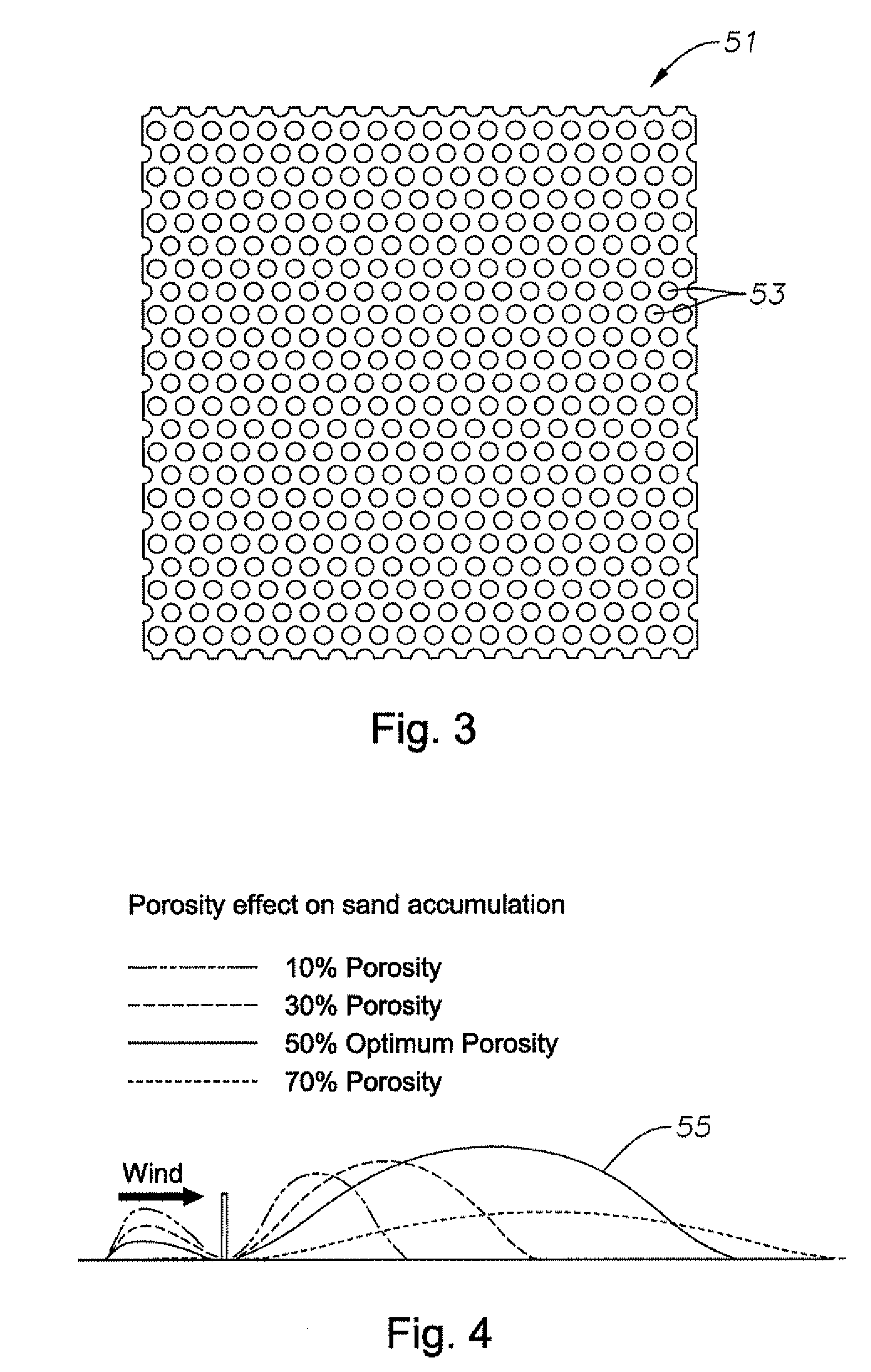Geogrid sand fence
a sand fence and geogrid technology, applied in metal-working equipment, protective construction, construction, etc., can solve the problems of sand accumulation on wellsites and roads located in these desert areas, requiring costly excavation procedures, and currently used methods, so as to minimize safety hazards and costs, easy to repair, and easy to standardize
- Summary
- Abstract
- Description
- Claims
- Application Information
AI Technical Summary
Benefits of technology
Problems solved by technology
Method used
Image
Examples
Embodiment Construction
[0029]The present invention will now be described more fully hereinafter with reference to the accompanying drawings, which illustrate embodiments of the invention. This invention may, however, be embodied in many different forms and should not be construed as limited to the illustrated embodiments set forth herein. Rather, these embodiments are provided so that this disclosure will be thorough and complete, and will fully convey the scope of the invention to those skilled in the art. Like numbers refer to like elements throughout.
[0030]As shown in FIGS. 1-12, embodiments of the present invention provide a sand fence including a High Density Polyethylene (HDPE) mesh sand fence material with specific material properties including, for example, material type, aperture opening size and geometry, porosity, and specific height. Such specific material properties and configuration properties including, for example, position with respect to the prevailing wind, are based on field studies pe...
PUM
| Property | Measurement | Unit |
|---|---|---|
| porosity | aaaaa | aaaaa |
| diameters | aaaaa | aaaaa |
| height | aaaaa | aaaaa |
Abstract
Description
Claims
Application Information
 Login to View More
Login to View More - R&D
- Intellectual Property
- Life Sciences
- Materials
- Tech Scout
- Unparalleled Data Quality
- Higher Quality Content
- 60% Fewer Hallucinations
Browse by: Latest US Patents, China's latest patents, Technical Efficacy Thesaurus, Application Domain, Technology Topic, Popular Technical Reports.
© 2025 PatSnap. All rights reserved.Legal|Privacy policy|Modern Slavery Act Transparency Statement|Sitemap|About US| Contact US: help@patsnap.com



